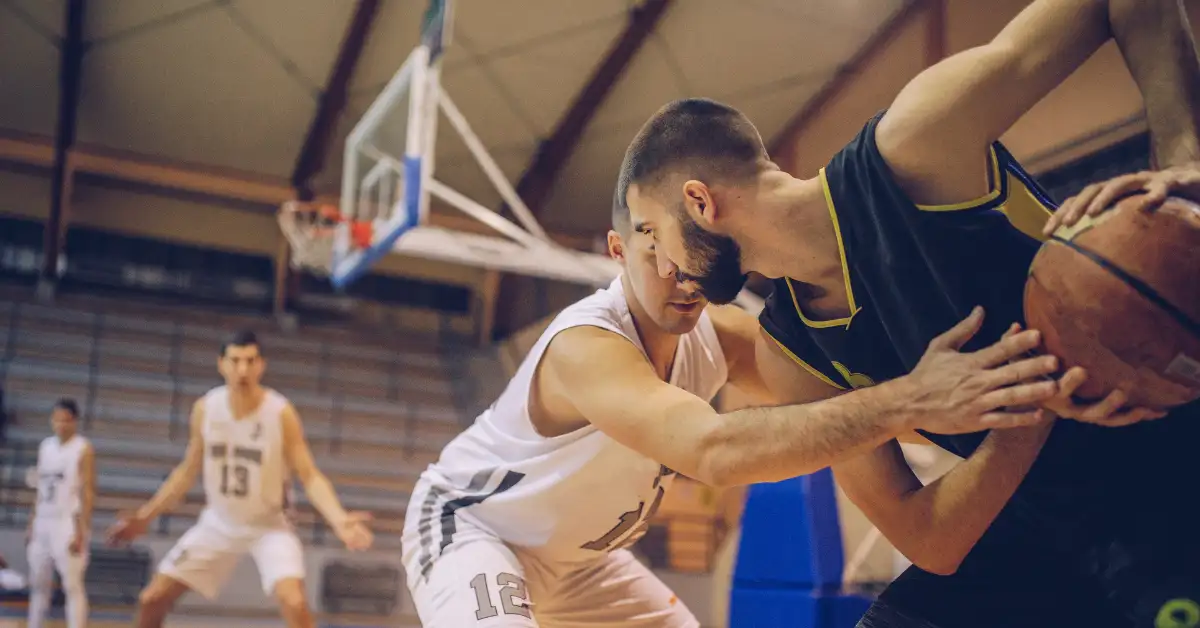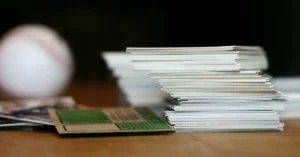Navigate the nuances of basketball fouls with my expert insights: What is Flop in Basketball? Explore the controversial tactic and its impact on the game.
What is Flop in Basketball?
Flopping is a tactic in basketball that players might use to gain an advantage over the other team. It’s all about acting skills and timing but can be a controversial move on the court.
Definition and Basics
What is a flop? At its core, a flop is when you, as a player, intentionally fall or act out an embellishment after little or no physical contact with an opposing player. The ultimate goal behind a flop is to deceive the officials into calling a foul that might not have occurred. It’s a strategic move that can shift the game’s momentum, granting your team potentially beneficial calls such as free throws or possession of the ball.
Flopping often involves a certain level of acting. You might see a player exaggerate contact impact, throwing their arms and legs out dramatically to sell the foul to the referees. The NBA has implemented rules to discourage flopping due to its unsportsmanlike nature, including in-game flopping penalties.
Flopping vs. Genuine Fouls
Understanding the difference between a genuine foul and a flop can get tricky. Genuine fouls occur when there is actual illegal contact made by a player that impedes the progress of another player. This could be in various forms, like a push, a trip, or excessive and unnecessary physical contact.
Flopping, on the other hand, is about creating the illusion of a foul. When you decide to take a fake tumble or react overly to a minor contact, it ordinarily won’t cause you to fall.
This embellishment is often criticized because it aims to mislead referees, disrupt the game flow, and gain an unearned advantage. It’s critical to remember that while a smartly executed flop might earn short-term gains, repeated offenses could tarnish your reputation on the court and even lead to fines or penalties from the league.
Rules and Penalties

NBA Regulations on Flopping
The NBA has set specific rules to minimize flopping, which is the act of a player intentionally falling or reacting dramatically to an alleged contact to persuade the officials to call a foul. Recognizing this can help you discern genuine fouls from strategic plays.
- In-game Flopping Penalty: During the 2023-24 season, the NBA introduced an in-game penalty for flopping, aimed at deterring players from this act.
- Coach’s Challenge Expansion: Teams can now retain a coach’s challenge if their first one is successful; this includes challenging potential flopping calls.
Consequences for Players
Players who violate the flopping rules could face various consequences from fines to technical fouls. It’s important for you to understand both the immediate and long-term repercussions for players.
- Immediate Penalties: Players caught flopping during a game might be penalized with a technical foul, which counts against the team and the player.
- Post-Game Fines: Flopping violations identified post-game can result in a $2,000 fine for the player involved.
The Impact of Flopping

On Game Dynamics
Flopping can turn the tide of a game, whether by gaining a possession, drawing crucial fouls, or halting an opponent’s momentum.
Players may use a charge flop to draw an offensive foul against the opposition, sometimes resulting in a turnover and giving the defensive team a competitive edge.
The ability to convincingly flop can lead to rewards such as free throw opportunities and possession gains, making it a tactical choice for some players.
Players’ Reputations
Your actions on the court can shape how both fans and fellow players perceive you. Regularly flopping can taint a player’s reputation, leading to labels such as “actor” or “unfair player.”
Over time, officials may become more skeptical of basketball players who flop often, which might reduce the effectiveness of such tactics. Moreover, consistent flopping can divert attention from a player’s genuine skills and contributions to the sport, as the discussion focuses more on questions of fair play.
Officiating and Technology

Role of Referees and Officials
Referees are integral to the enforcement of rules on the court, including flopping violations. They must make split-second decisions based on what they observe in real time.
A non-unsportsmanlike technical foul may be called on a player who attempts to deceive the referees by flopping. This enforcement by referees ensures that flopping is discouraged and the spirit of the game is preserved.
Use of Video Review
The league office has empowered officials with video review technology to assess actions on the court more accurately. For instance, plays ruled as flopping violations can be evaluated during a game through replay review, resulting in a technical foul and a free throw for the opposing team.
Post-game, the league also uses video to determine if a flop occurred; consequences can include fines, highlighting the commitment to reduce flopping. Video review complements referees’ in-game calls and holds players accountable for their actions.
Evolution of Flopping Rules

In basketball, the art of drawing a foul through exaggerated movement, known as flopping, has led to rule changes. These changes reflect the ongoing efforts to preserve the integrity of the game for you, the fans, and the players.
Historical Perspective
Historically, basketball has seen its fair share of players attempting to draw fouls by exaggerating the impact of contact, a tactic commonly called flopping. This strategy was often used to gain an advantage, whether to earn free throws or to get an opposing player in foul trouble. Over the years, it became clear that flopping negatively impacted the game’s flow and sportsmanship.
The NBA Board of Governors and the Competition Committee have consistently reviewed the rules surrounding flopping, reflecting their commitment to preserving the game’s integrity. Initial responses included the introduction of fines for egregious flopping, with the purpose of deterrence. Yet, these fines were a balancing act, as they were not so high as to be seen as excessive, but sufficiently substantial to act as a disincentive.
Changes and Trials
The evolution of flopping rules in basketball, specifically within the NBA, entered a new phase in the 2022-23 season. The NBA’s Board of Governors approved critical changes to reduce flopping, recognizing its impact on the game’s authenticity and competitive fairness.
- Two significant changes were approved:
- A second coach’s challenge if the first is successful.
- An in-game flopping penalty, enhancing the ability to address flopping as it occurs.
Alongside these changes, fines still played a part in regulating player behavior. Upon review after a game, a flop could result in a $2,000 fine, with subsequent violations leading to increased penalties. Furthermore, if a flopping violation coincided with another technical foul, the penalties could be compounded.
The rule modifications, such as the one concerning the flopping penalty, generally undergo a period of trial and observation before being fully integrated. Summer League games, for example, are often used to test new rules. These games provide invaluable data and feedback for the league, which is used to refine and adjust the rules as needed.
FAQ
What is the NBA flopping rule?
The NBA has implemented rules and penalties to discourage flopping, which is when a player exaggerates contact or acts to deceive referees into calling fouls on opponents. Flopping is considered unsportsmanlike conduct and can result in penalties such as fines or technical fouls.
Who flops the most in the NBA?
Flopping behavior can vary among players, and it’s subjective to determine who flops the most in the NBA. Some players may have reputations for embellishing contact, while others may be known for their physical style of play.
Is there a penalty for flopping?
Yes, the NBA has penalties in place for flopping. Players found guilty of flopping may receive fines, warnings, or technical fouls, depending on the severity and frequency of the offense. The league reviews game footage to identify instances of flopping and imposes appropriate penalties to deter the behavior.
If you enjoyed reading about the topic: What is Flop in Basketball, leave a comment and stay updated on Pinterest for more exciting basketball news.
Leave me a comment and make sure to also check out How to Meet NBA Players Before Game.






